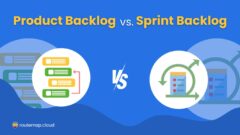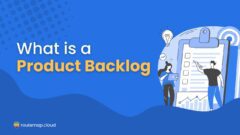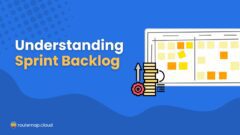Imagine the following situation: Creatives were confident in their ideas, developers delivered value, and the user testing sent back feedback and more work was necessary. So, creatives revisited the product and made new design decisions, the developers once again carried out the vision, and… the user testing brought back more work.
Sadly, this is how most teams approach product development and delivery. The continuous circles can be anguishing, time-consuming, and expensive.
Fortunately, there is a way to optimize the whole process – simply by adding on product discovery! Product discovery takes its place during the planning phase, receives information from the users, develops data-backed ideas, and then sends them off to the delivery team.
The result? Deliverables that reflect real user needs and desires. Find out more about it and the process in this product discovery guide!
Why is Product Discovery important?
Product discovery is all about finding out what target consumers really need and want. Teams may already have a good foundational idea, but it is risky to develop based on that alone. Early user feedback can help them define and refine the idea into something truly excellent. Accordingly, consumers receive a product that can actually help them, or they can use it to accomplish their goals.
Of course, this is not only important for the consumer. It can also benefit the team and the overseeing company:
- The consumer will see the use-value in the product, buying it the first time and buying it again.
- The customer will understand how to use the product easily.
- The development team will be able to make use of the available resources to build the product.
- The business will not need to go over time or budget to deliver the product.
- The team will not lose motivation or morale from constant re-designs.
- The business does not need to perform damage control and deal with a re-launching hassle.
What is the Product Discovery Process?
Product discovery is a process in itself. However, this should not intimidate teams. If they have the right approach, it will simplify product development and delivery rather than complicate the situation.
All product discovery models essentially follow the same structure. They look at understanding the users’ needs, defining those needs for optimal clarity, brainstorming and identifying solutions, and prototyping and testing.
One efficient model takes a two-step approach which can help teams further reduce any complexity. In this way, they can move through product discovery and delivery smoothly.
- Discovering the users’ needs
- Understanding
- Defining
- Identifying the solution
- Brainstorming
- Prototyping
- Testing
Let’s take a closer look at this process in our product discovery guide.
1. Discover the Users’ Needs
The first step in the product discovery process is to discover the target users’ needs. Your team may already have some assumptions or ideas about what the user problems or goals are, however, they should keep these as broad as possible. Specifics should be heard directly from the users themselves, or you risk the same problems as seen with no product discovery process.
Understand
User research is the only way to fully understand the target audience. Teams can use the big problems they are attempting to solve or the broad goals they want to help with to direct their research.
They should also consider their resources and users when determining how to carry out their research – whether it be through focus groups, interviews, or industry data analytics. Teams can draw observations from the data or recognize any patterns that emerge.
Tip: Consider collecting information from various, appropriate sources. Your data will be comprehensive and accurate, allowing for a full range of understanding.
Define
After extensive research, your team can define and articulate specific problems clearly. They should also understand how big or small the problems are because they will need to prioritize the most important ones.
In this way, they will be able to tackle the biggest problem first, completely understand what that problem is, and know how valuable a solution would be to the users.
Tip: It may be hard for the team to stay in this stage. It is a natural instinct to rush to solutions and propose answers. Encourage individuals to stay focused on the user at this point, empathize with them, and develop a full picture of their problems or goals.
2. Identify the Solution
Step one allows for understanding the users and their problems (or goals). In step two, your team can think of concrete solutions for each problem. It may be clear how the product discovery process is better than skipping straight to product delivery. Now, your team understands specific problems and they can brainstorm ideas.
Furthermore, they can sort through the problems before they reach product delivery and prioritize which ones should lead to a prototype. As a result, they save resources by devoting their time and energy only to the best ideas.
Brainstorm
Brainstorming is the fun part. They can evaluate their list of problems, consider their informative user research results, and ideate potential solutions.
It is worthwhile to run solutions by the company’s objectives as well, making sure everything matches up well. For instance, the team can consider business values, feasibility, and project limitations such as timeline and budget. Finally, each solution should be prioritized appropriately.
Tip: Prioritizations can be hard unless team members stay objective. Examine multiple prioritization frameworks and select the one that works best for your team and project.
Prototype
The first, prioritized solution will be the primary prototype. Since the prototype is based on specific user needs, isolated problems, and information-backed solutions, the development team should have an easier time with the work at hand. They will also have a clear directive in mind.
Testing
Finally, the prototype will head to user testing. The product should receive better feedback from the target audience. However, teams should not expect fully positive feedback and a perfect product. There may still be functions and features that need work. That said, it should cut down on unnecessary work and backtracking – your team will complete fewer product delivery circles.
For more helpful information, please stay tuned with us at Routemap and DevSamurai. We offer both solutions and informative articles for everyone who is interested in using Atlassian, Jira, and Confluence for work.




